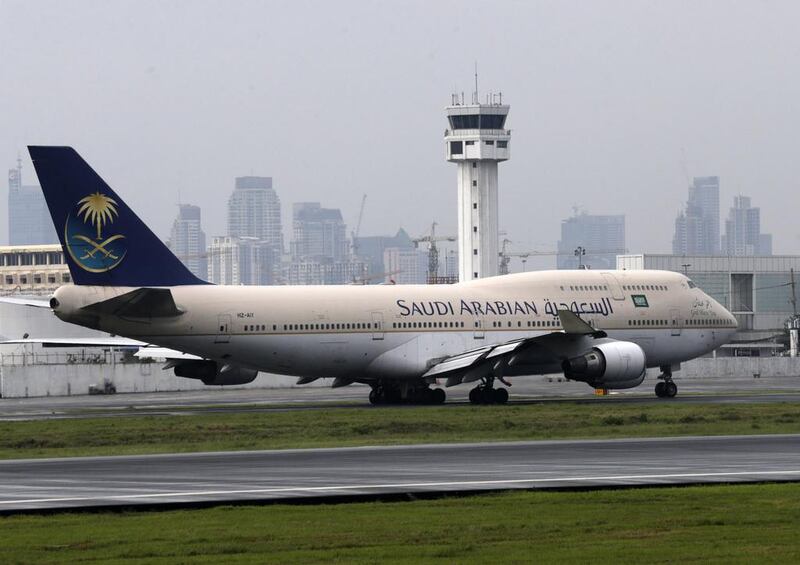The growth in passenger demand for the carriers operating in the Middle East slowed to 0.8 per cent year-on-year in May after recording a 2.9 per cent annual expansion April, the International Air Transport Association (Iata) said.
The earlier advent of Ramadan this year may have affected the passenger demand growth, which is measured in revenue passenger kilometres, however, more broadly, the upward trend in passenger traffic has slowed compared to last year, the aviation agency said in a statement released on Thursday. The capacity climbed 3.7 per cent, whole load factor -- a measure of capacity utilisation by the airlines -- fell 1.9 percentage points to 67.5 per cent, it said.
Globally, traffic results for May showed a 6.1 per cent rise in demand from a year-earlier, which was a slight pickup from 6 per cent year-on-year growth reported for April. Capacity climbed 5.9 per cent and load factor rose 0.1 percentage point to 80.1 per cent.
"May was another solid month in terms of [global] demand growth," said Alexandre de Juniac, Iata’s director general and chief executive. "As had been expected, we saw some moderation, as rising airline costs are reducing the stimulus from lower airfares."
In particular, he said, jet fuel prices are expected to be up nearly 26 per cent this year compared to 2017.
"Nevertheless, the record load factor for the month signifies that demand for air connectivity is strong," he added.
International passenger traffic demand rose 5.8 per cent, up from 4.6 per cent growth in April. All regions recorded growth, led by Asia-Pacific airlines as total capacity climbed 5.4 per cent, with load factor rising 0.3 percentage points to 78.7 per cent.
Asia-Pacific airlines saw traffic rising 8 per cent in May from the same period a year earlier, slightly down on an 8.1 per cent increase in April. Capacity increased 7.6 per cent, and load factor edged up 0.3 percentage points to 77.9 per cent.
_______________
Read more:
Qatar Airways chief executive criticised by Canadian travel minister over sexist remarks
Iata asks governments to release $5bn in airline revenues
_______________
European carriers’ May demand climbed 6.2 per cent over May 2017, well above the 3.4 per cent year-over-year growth recorded in April, while North American airlines’ traffic rose 4.9 per cent, a strong rebound from 0.9 per cent annual growth in April, which was a 36-month low.
African airlines' traffic rose 3.8 per cent in May compared to the year-ago period, which was an eight-month low.
Domestic markets demand rose 6.6 per cent from in May from a year-earlier, led by growth in China and India. This was down from the 8.6 per cent year-on-year growth recorded in April, largely owing to moderate growth in both countries, although each continued to post double-digit traffic gains.
"Last month, Iata released its mid-year economic report showing expectations of an industry net profit of $33.8 billion," said Mr de Juniac, said adding that, although this is a solid performance "our buffer against shocks is just $7.76 .... that’s the average profit per passenger that airlines will make this year - a narrow 4.1 per cent net margin".
There are storm clouds on the horizon, including rising cost inputs, growing protectionist sentiment and the risk of trade wars, as well as geopolitical tensions, he noted. "Aviation is the business of freedom, liberating people to lead better lives. Governments that recognise this will take steps to ensure aviation is economically sustainable. And aviation works best when borders are open to trade and people."
On freight, Iata said Middle East carriers’ volumes measured in freight tonne kilometres, grew 2.4 per cent in May compared with 6.9 per cent the previous month. Capacity increased 3.3 per cent.
Globally, demand rose 4.2 per cent in May, compared to the same period the year before. This was slightly down from the 5.2 per cent growth in annual demand recorded in April, Iata said.
“We expect air cargo demand to grow by a modest 4 per cent in 2018," said Mr de Juniac, said in a separate statement. That’s an uptick from a very weak start to the year, he added.
All regions except Africa reported an increase in growth in May 2018. African carriers saw freight demand contract 2 per cent in for the period compared to the same month last year.






